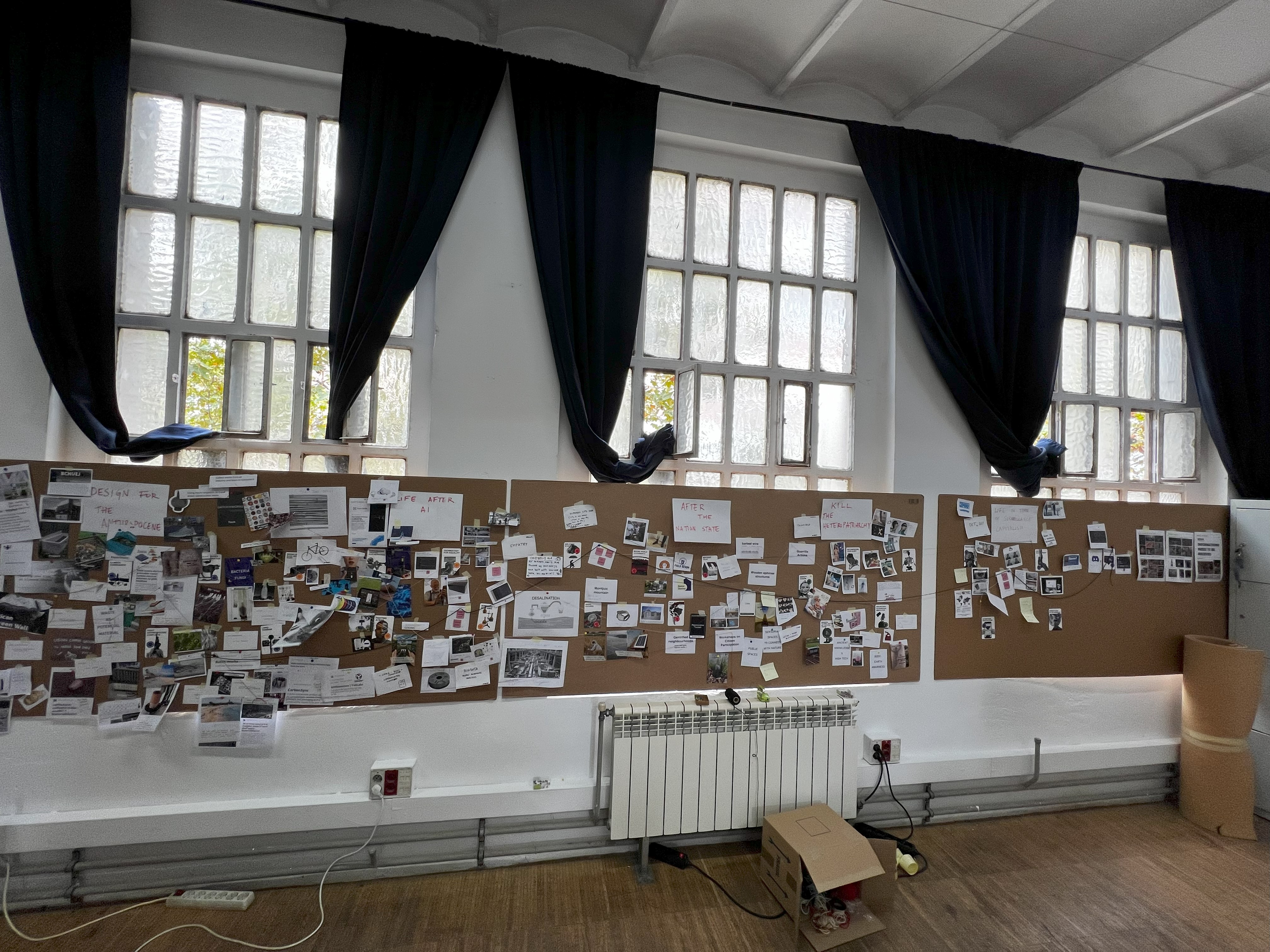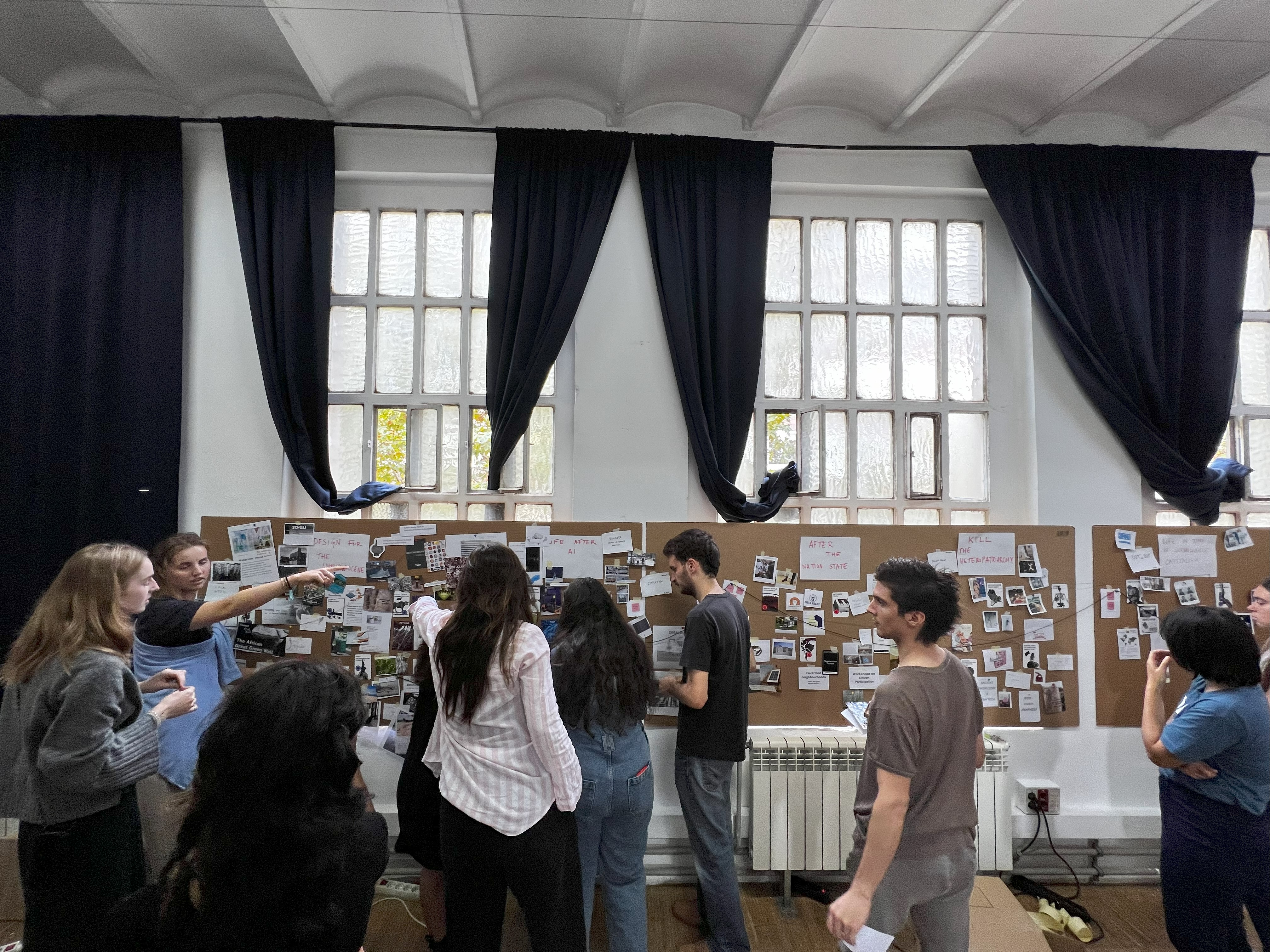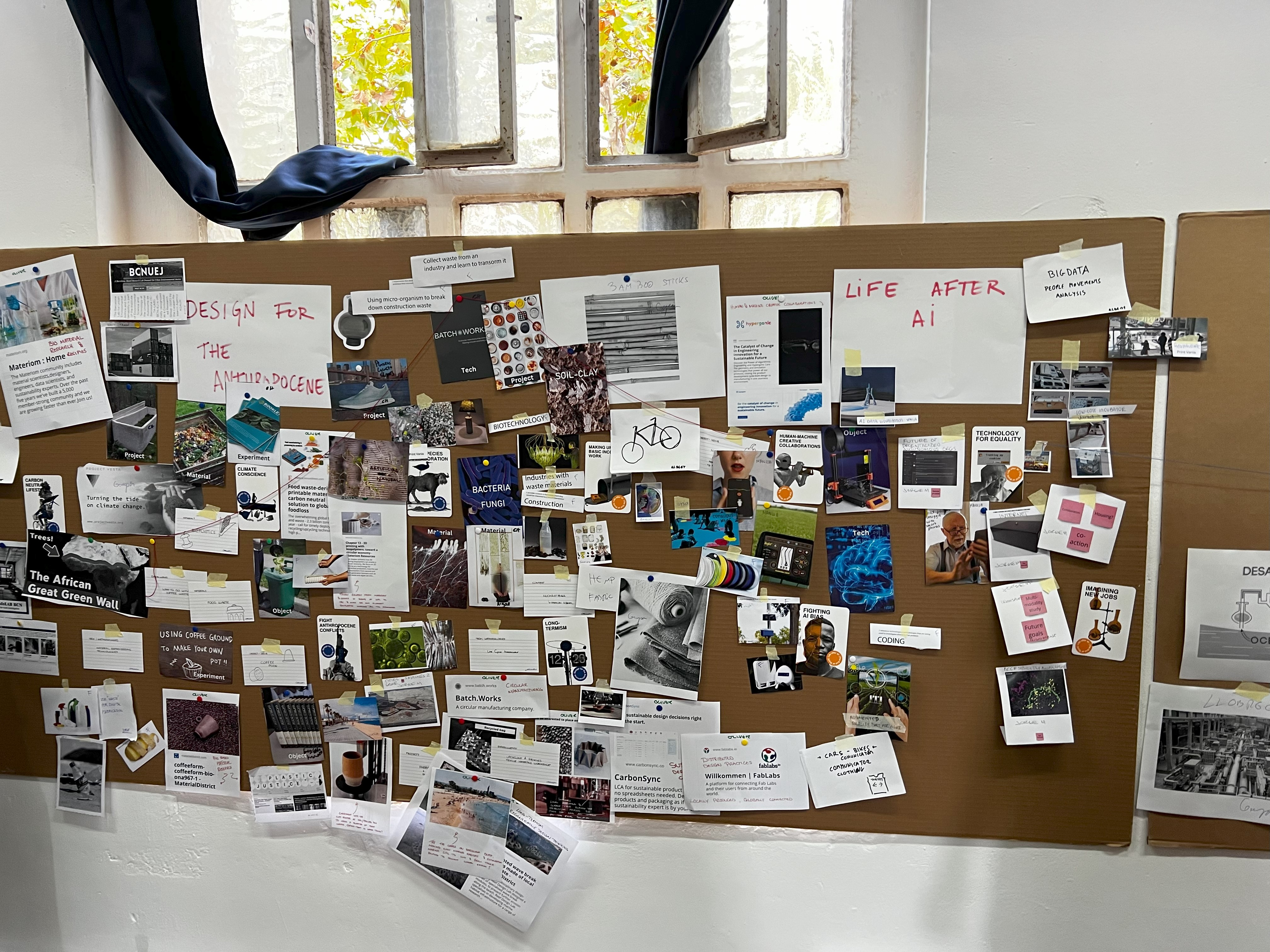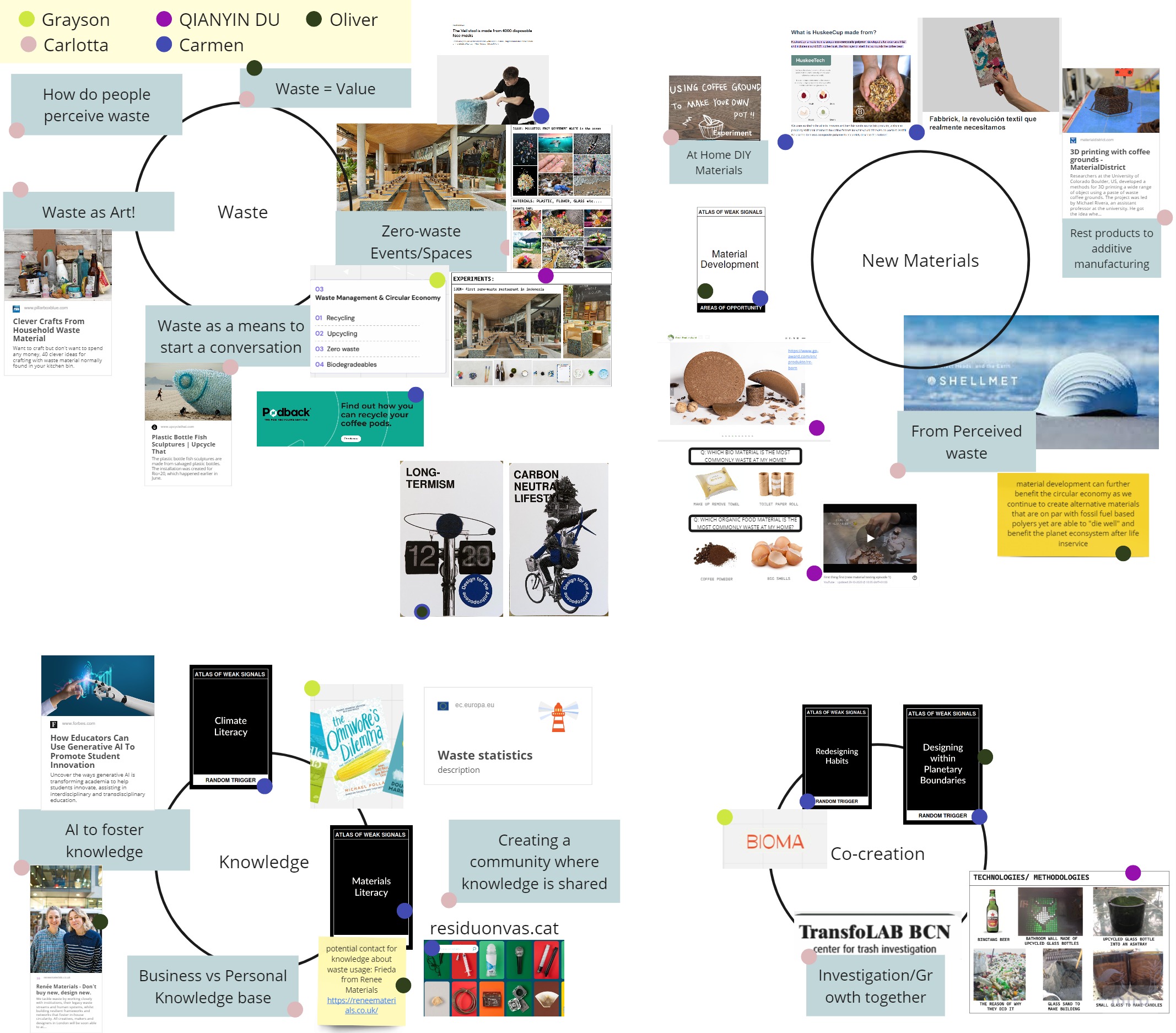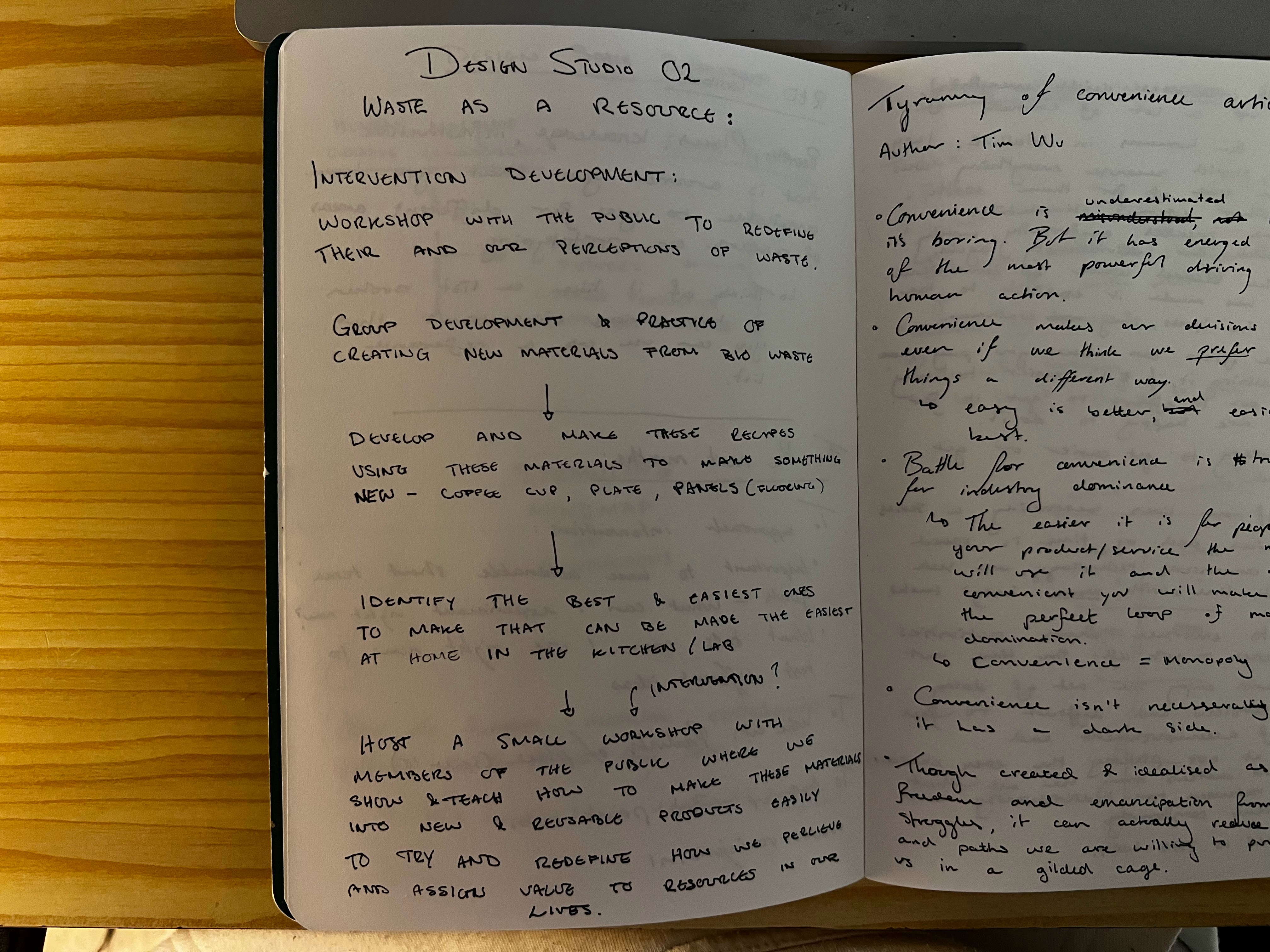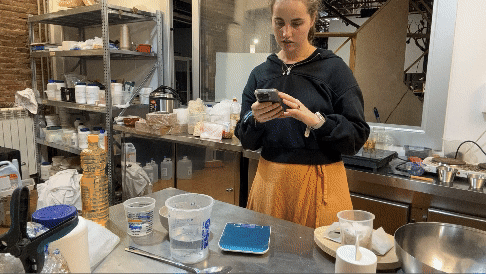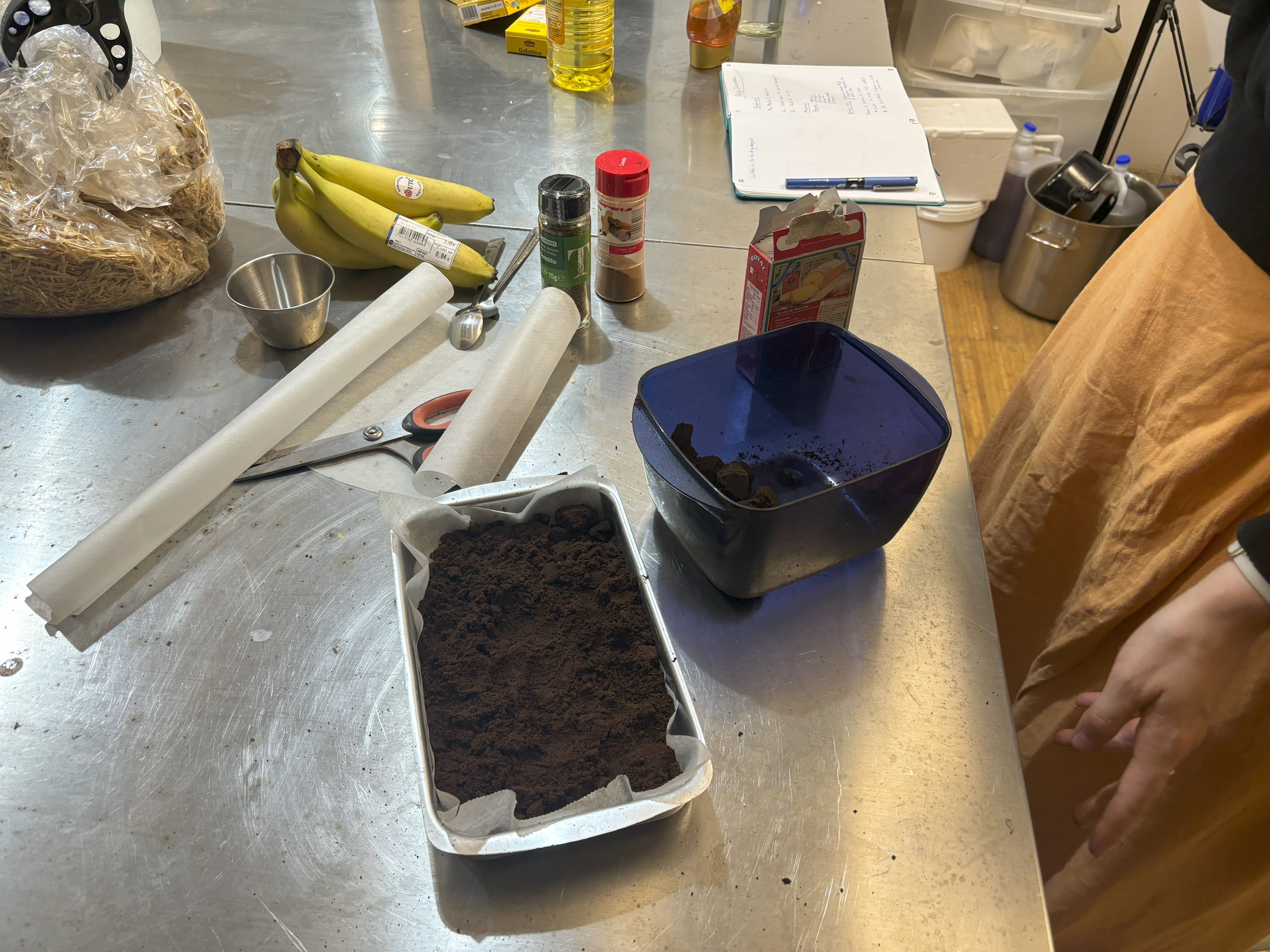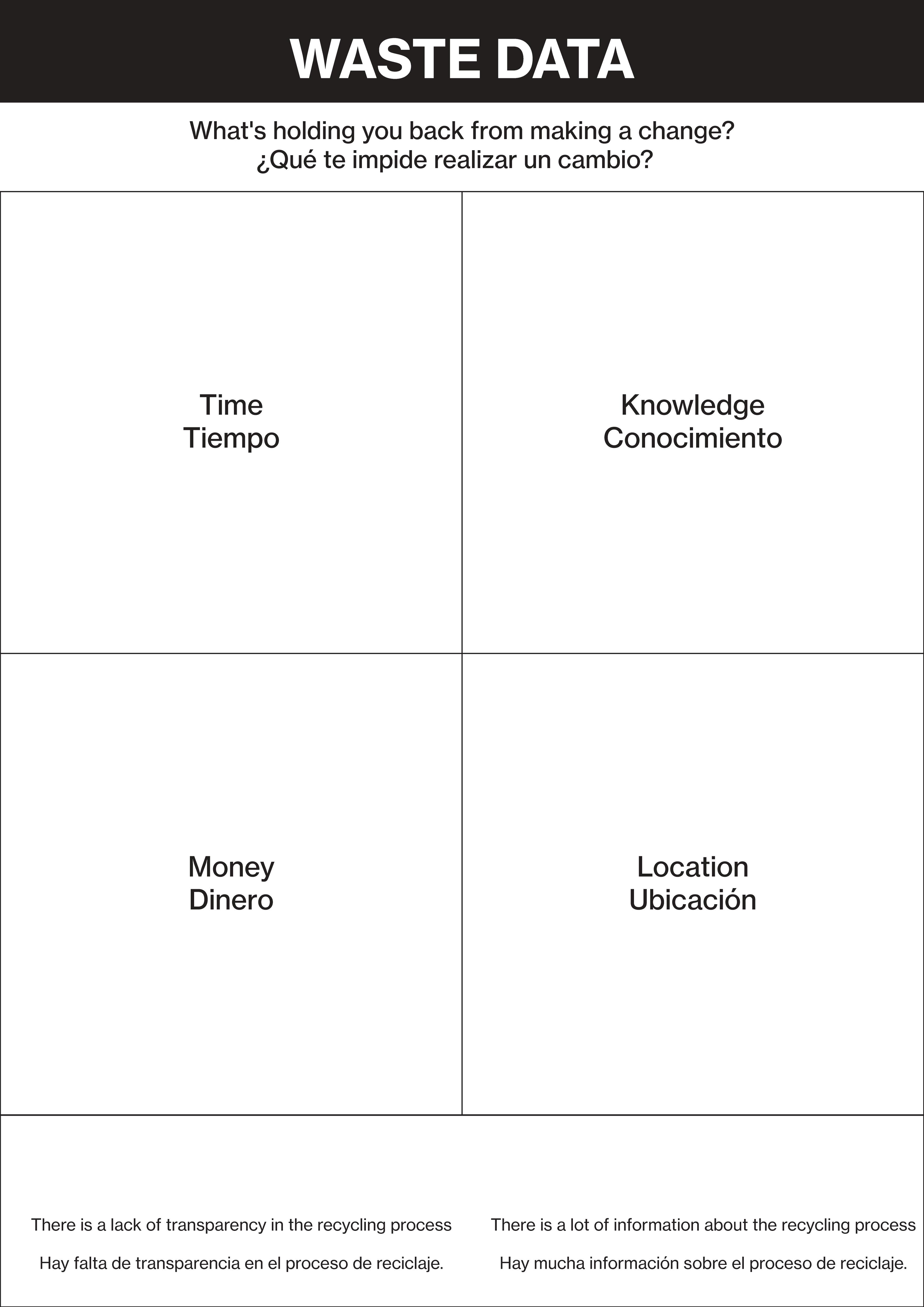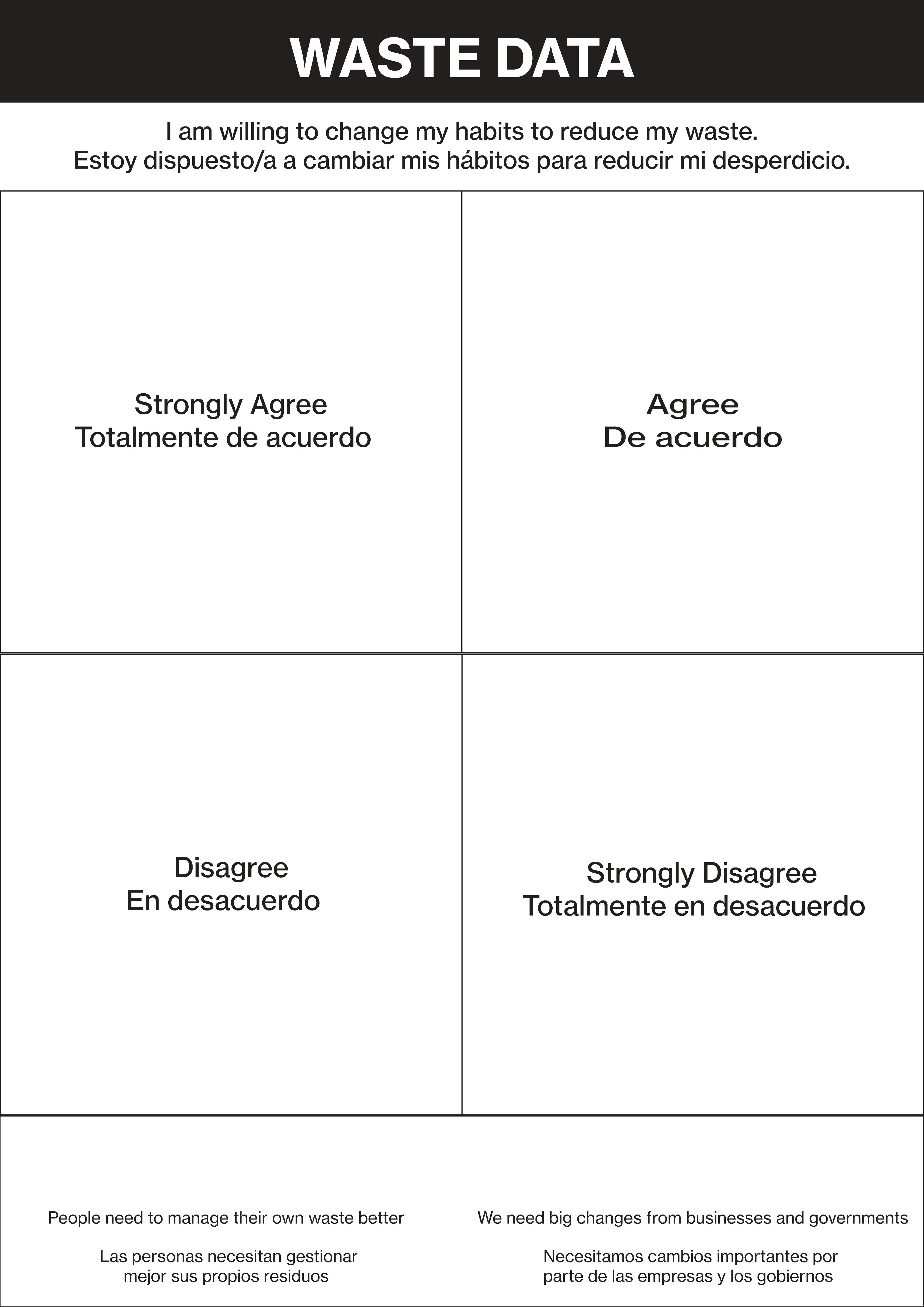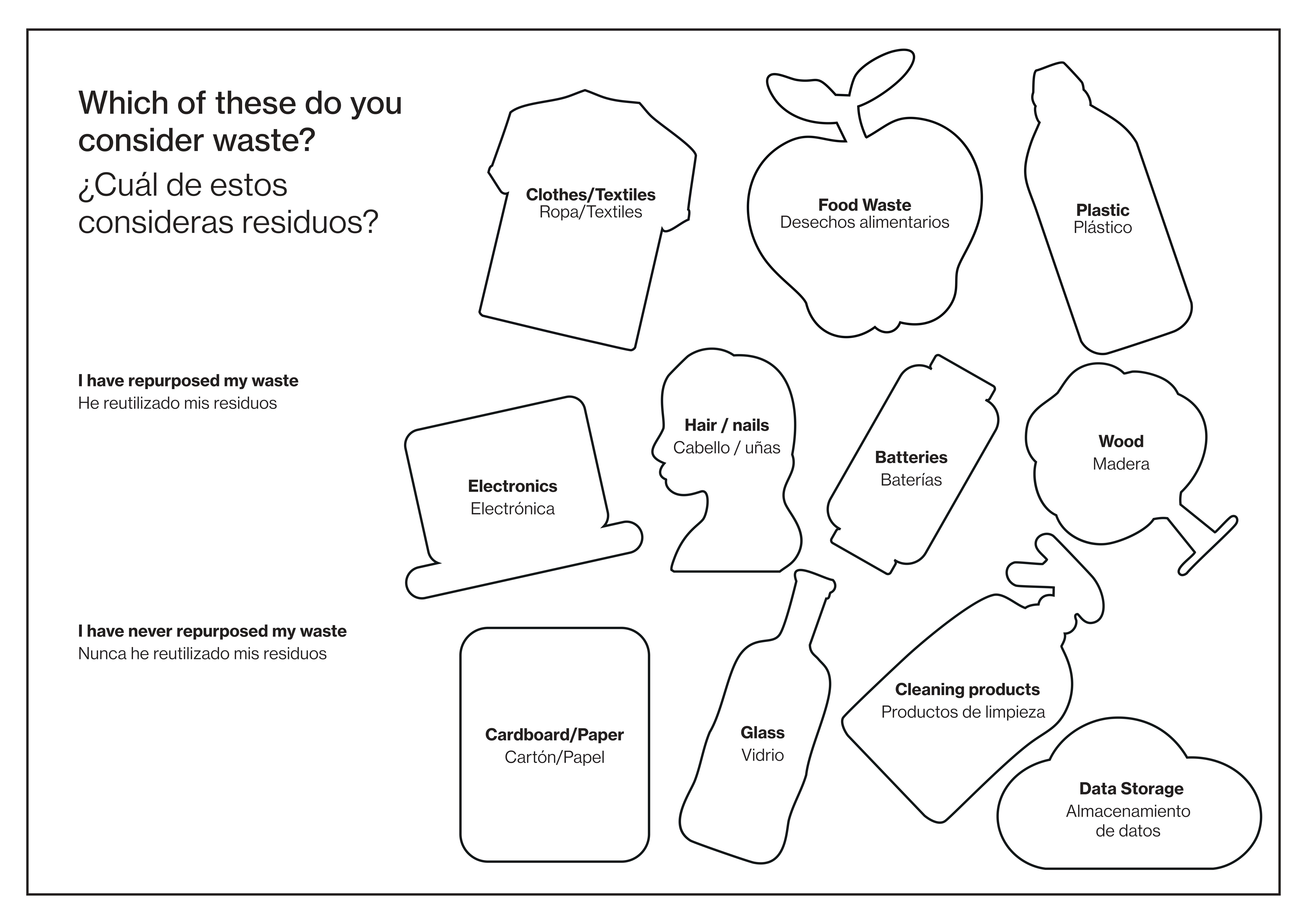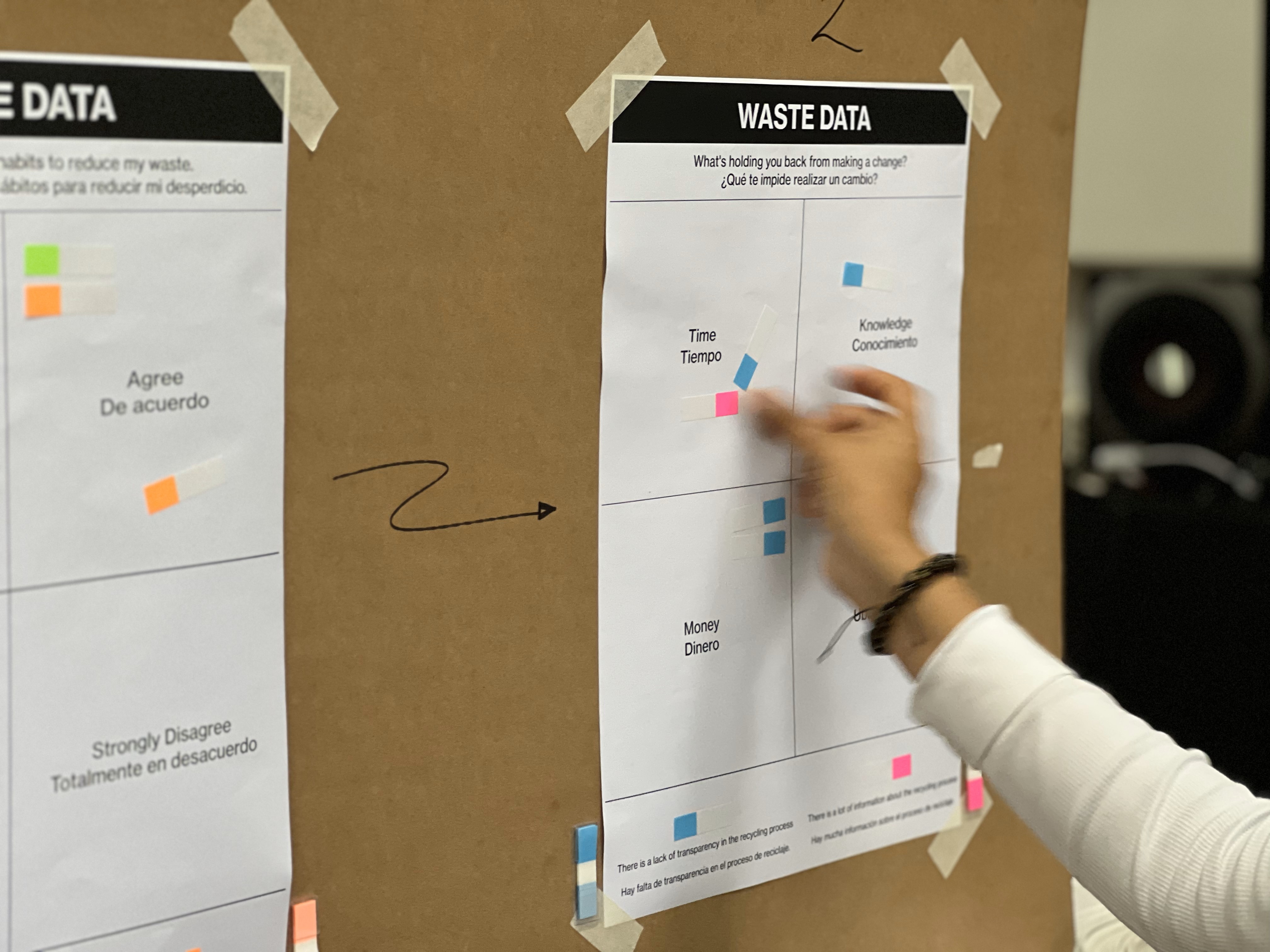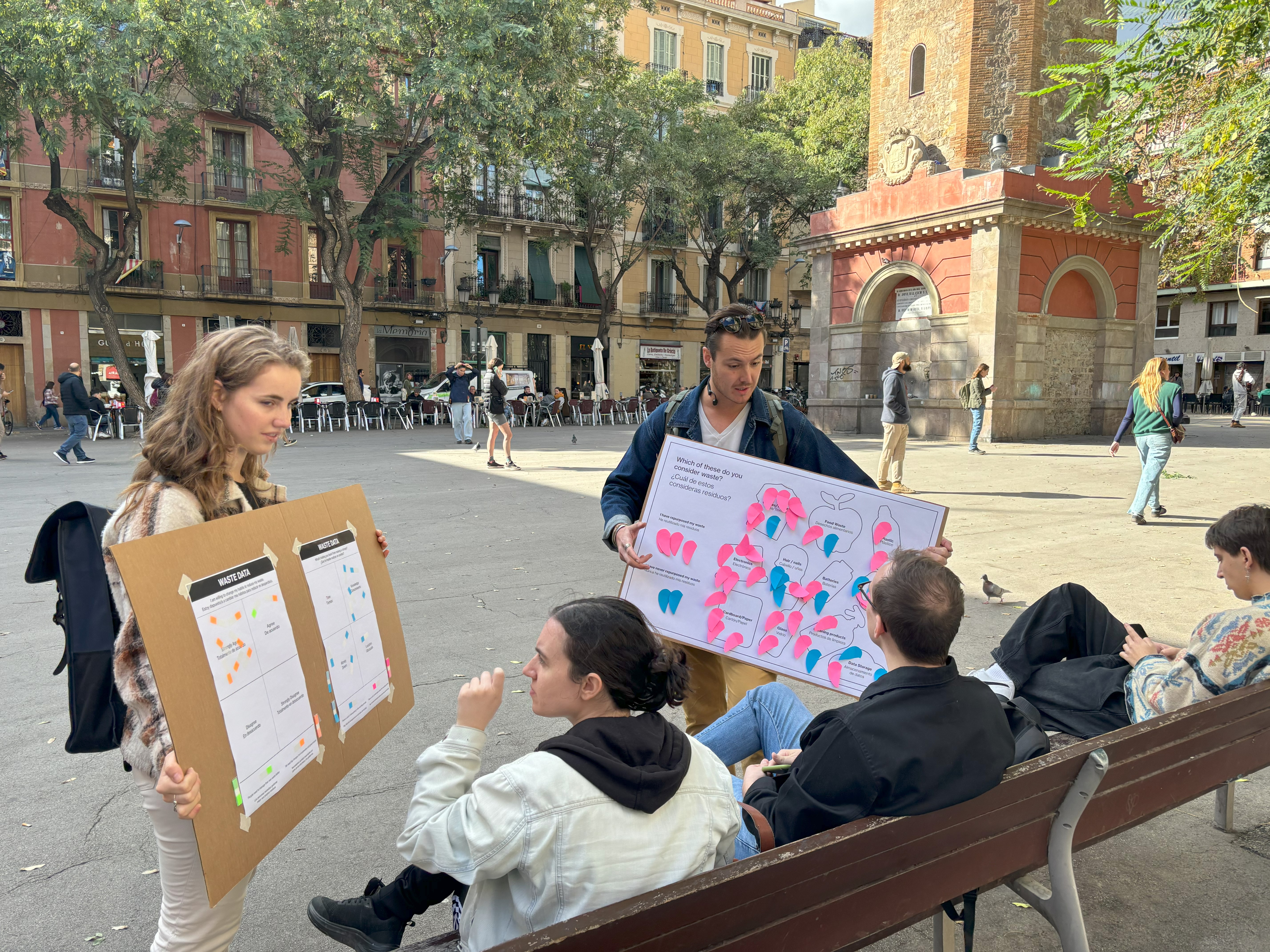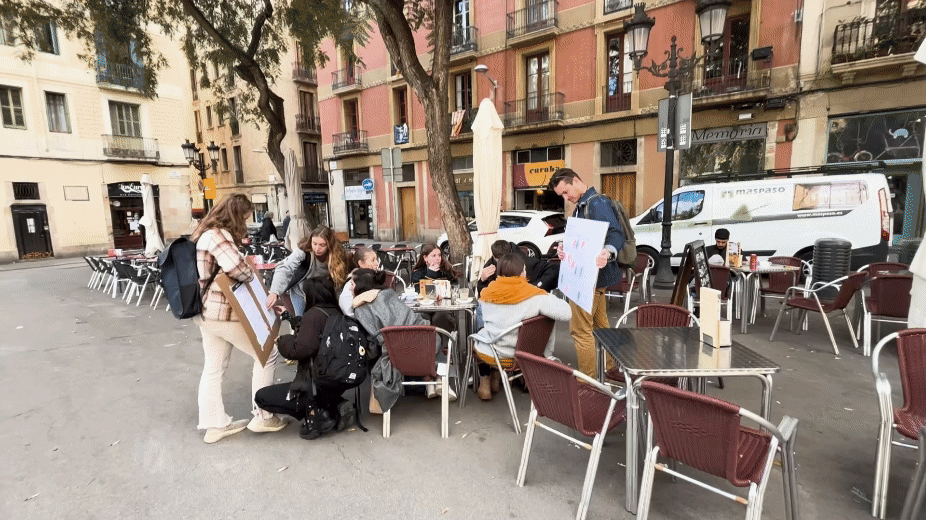Design Studio 01.01 - Our first intervention
Too Long Didn’t Read
In our second design studio, led by Jana and Roger, we created a collective physical design space to explore our shared interests. My group focused on reframing waste as a resource. Initially, we planned a biomaterial workshop, but it was too broad. We pivoted to interactive posters, conducting informal Q&A sessions around Barcelona to understand public perceptions of waste. This approach provided invaluable insights and highlighted how people repurpose waste creatively. This exercise deepened my understanding of design interventions and their role in shaping alternative presents.
Intro¶
Our second design studio class was led by Jana and Roger. In this session, we developed a collective physical design space where we placed printouts that reflected some of the topics we were most interested in exploring and learning more about. This then led to us forming smaller groups based around shared interests in which we would work towards creating a pilot design intervention that we would implement out in the real world.
Creating a collective design space¶
To start, each of us in the class brought small printouts of various topics, ideas, projects and materials that interested us. We stuck them all up on a big wall in the classroom (similar to large post-it note walls you might find in creative offices)and then various bits of string we drew connections between each of these interests and grouped some of them together based around different weak signal areas.
This was a really useful exercise actually, as it finally gave us all a space to see everyone’s different ideas and interests in one place (though I’m sure it wasn’t all of them, I know I definitely didn’t bring everything, it would’ve covered the entire wall!). Seeing our interests and the similarities that some of them shared led to all sorts of exciting conversations between us. It was great because it helped us create little groups that wanted to focus on exploring a particular topic.
Waste as a resource¶
One of my main focuses at this point was on reframing the value we place on stuff we right now call waste. I was interested (and still am to this day) in exploring how we can change the value proposition around traditional waste material. How can we design products and services that are easy to repair so they aren’t seen as waste, or how can we reuse waste from food industries to create new biomaterials for products?
I joined forces with some of my classmates, Carmen, Carlotta and Minhea. We all shared an interest in reframing waste as a valuable material supply, from recycling concrete to creating biomaterials and changing policy.
We then sat down to create a shared digital design space for our particular group interests to see if we could all find something to work together on.
This was a valuable way for us to get all our ideas out on paper. It encouraged us to have conversations around what we actually considered to be waste ourselves, what our different ideas were around how we should go about preventing waste or recovering value from it, and how we wanted to explore it ourselves.
Initially, we struggled to come up with an idea as to what kind of intervention we could make in the time that we had, as waste is such a colossal topic! But Roger reminded us that an intervention doesn’t have to be the “be all end all” solution; it doesn’t even have to be a solution; it can be a stepping stone in part of your design research that helps lead to deeper and more interesting questions that provide the insight you need to get the real solution at the end of the tunnel. After that, we settled on trying to aim for a more reflective approach, where we would create some form of activity that we could do with members of the public to get their perceptions around waste and how we could try and change their view on it.
Our first design intervention¶
This intervention ended up completely different from what we had initially thought we wanted to do. We always had the aim of making a reflective activity that people could take part in that would challenge their ideas around what waste would be, but the path we travelled to get there was completely different to what I thought we would do.
Our first plan was to host a workshop where participants could make their own biomaterial from household organic waste products and turn it into something useful. And to do that, we had to test out if it was even possible to create any sort of useful material in your kitchen.
So we got together one crisp Saturday morning to do just that, meeting in the biolab in the IAAC building to cook up a variety of materials based on recipes we found from Materiom (one of my favourite resources; learn more about them here) along with a few other sources.
During this exploration, while we were cooking and discussing, we realised that this topic was far too broad and not something that could easily be condensed into a 1-hour workshop and that this process was going to far too long and not create the kind of impact we were looking for.
So we pivoted.
We returned to the drawing board and tried to come up with something new. After some time, we came across the work done by a group here in Barcelona called Domestic Data Streamers. They hosted all sorts of exhibitions with data gathered from people in entertaining and interactive ways that created the kind of reflection we wanted. So we tried our hand at this; we decided to make some interactive questions and host informal Q&A sessions with the people living here in Barcelona.
Starting with a primary survey we sent out, we wanted to get a rough feel for what people thought about some basic questions around waste and value. Asking things like what would you consider waste? And how have you repurposed your waste, if at all? And many more; you can take a look at the original survey here.
Asking these questions helped us to look for the deeper questions in the answers we received. From these answers, we landed on 3 key questions we wanted to know the answer to:
- what they considered to be waste
- what they wanted to change themselves
- What was holding them back from making a change?
These questions would be answered with a sticker represneting one of two statements, so we were actually getting an answer to two questions in one!
With these questions in mind, we created our interactive posters, stuck them to some large pieces of cardboard we found (very low-tech, I know) and proceeded with our intervention. We hung a set of posters up in our own university building to see what the reactions and responses would be from people who we thought would be the most likely to be aware of and working towards solutions around these issues and the next, we took around Barcelona with us!
We wandered around the neighbourhood of Gracia, inviting strangers to participate in our research and see what they had to say. While this was initially a little nerve-racking, we got over it, and soon, we were chatting with people left and right and getting some fantastic insights. I’m glad we took this approach; the answers we got and our conversations really painted an interesting picture that we wouldn’t have gotten otherwise if we’d done something else. Turns out most people are trying their hardest to repurpose the majority of their plastic waste into other useful things around their home and life, as well as turning as much food waste as they can into compost for their plants!
That was definitely different from what I was expecting.
Overall, it was a fascinating data-gathering exercise. I’m happy now that I think I have a better understanding of what a design intervention is and how it can be used to begin to create the alternative presents we want to achieve. I’m looking forward to using some of this research in different projects moving forward!
Take a look at the video below to learn a bit more about how we created this first intervention!
